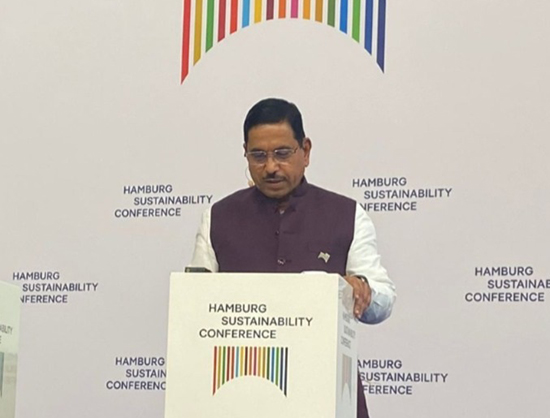India's USD 25 Million Investment in Green Hydrogen Hubs for Sustainable Shipping
Key Ideas
- India is investing USD 25 million in hydrogen hubs at key ports like Deendayal and Paradip to support green hydrogen-powered vessels, aiming to boost sustainable shipping.
- The National Green Hydrogen Mission (NGHM) has a target to produce 5 million metric tonnes of green hydrogen annually by 2030, attracting significant investments and creating job opportunities.
- The Indian government is modernizing shipyards and evaluating older dockyards for reopening to expand green shipbuilding capacity, with a focus on converting existing vessels to run on green hydrogen or its derivatives.
- India has seen a substantial increase in renewable energy capacity in recent years, with a significant rise in solar energy capacity, showcasing the country's commitment to innovative technologies and international cooperation.
India is making a substantial investment of USD 25 million in developing hydrogen hubs at key ports like Deendayal and Paradip as part of its green shipping initiative. This move aims to support green hydrogen-powered vessels and enhance sustainable shipping practices. The Union Minister for New and Renewable Energy, Pralhad Joshi, announced this investment during his keynote address at the Hamburg Sustainability Conference in Germany. The government is also allocating USD 14 million for pilot projects under the National Green Hydrogen Mission (NGHM), which targets producing 5 million metric tonnes of green hydrogen annually by 2030.
The focus is on converting existing vessels to operate on green hydrogen or its derivatives, with examples like the Shipping Corporation of India converting two vessels to run on green methanol. Additionally, efforts are underway to modernize Indian shipyards and possibly reopen older dockyards to bolster green shipbuilding capacity. The goal is to position India as a significant hub for green shipbuilding and support the maritime sector's pivotal role in global trade while reducing greenhouse gas emissions.
India's commitment to renewable energy is evident through a substantial increase in capacity, with a 175 percent rise from 75 GW to over 208 GW since 2014. Solar energy capacity has particularly surged by 33 times in the last decade, showcasing India's embrace of innovative technologies and robust infrastructure development. With a strong emphasis on alternative fuels, renewable energy sources, and green shipping fuels, India aims to rank among the top five shipbuilding nations by 2047.
Pralhad Joshi invited international stakeholders to collaborate on India's green hydrogen and renewable energy projects, emphasizing the country's transformation into a leading force in global sustainability initiatives. The government's initiatives, technological advancements, and international partnerships have propelled India towards a prominent role in the transition to green energy.
Topics
Asia
Green Hydrogen
Renewable Energy
Maritime Sector
Job Creation
Green Shipping
Port Development
Renewable Energy Capacity
Green Shipbuilding
Latest News
